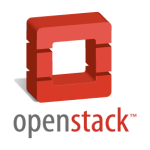How to compare two files in Linux command line
You can compare two text files in Linux using the following command-line tools:
– diff
– vim / vimdiff
These tools are already installed “out-of-the-box” in most Linux distributions.
Read More
You can compare two text files in Linux using the following command-line tools:
– diff
– vim / vimdiff
These tools are already installed “out-of-the-box” in most Linux distributions.
Read More
Secure Shell (SSH), besides standard password authentication, gives us the possibility to authenticate using private – public key relation. This allows us access remote systems without typing the password each time we want to connect and the connection is still secure. This method is based on generation of two keys: private key (kept private on our local host), public key (given to any remote host we want to connect to passwordless).
Read More
DHCP (Dynamic Host Configuration Protocol) is a network protocol used for dynamically assigning IP addresses for computers attached to the network. Standard port used for DHCP service: 67(UDP).
In this tutorial we will launch dhcp server on CentOS 7 / RHEL 7 and define example subnets.
Read More

Cinder Volumes group is a block storage based on LVM (Logical Volume Manager) volume group, usually situated in Controller node in OpenStack cloud. It provides persistent block storage for runtime instances.
During typical packstack installation Cinder Volumes group size is determined in answer file (insert file) by following parameter:
CONFIG_CINDER_VOLUMES_SIZE=20G
If the Cinder Volumes group size we chose upon packstack installation turns out to be insufficient to create new volumes, we can attach additional physical volume on Controller node to the existing Cinder Volumes group and extend it with the new physical volume to gain more space.
Read More
RedHat 7 / CentOS 7 unlike previous version 6, doesn’t provide the ability to reset / recover root password in signle-user mode any more. This situation takes place, because RedHat 7 / CentOS 7 uses systemd manager instead of sysVinit / upstart and both systemd targets: rescue.target and emergency.target require root password. That’s why in RedHat 7 / CentOS 7 we need installation disk to boot from.
Read More
RedHat 6 / CentOS 6 system gives us the opportunity to reset root password in case we forget it, on condition that we have a direct access to the machine on which we want to reset root password. Password can be reset after booting the system into single-user mode.
Steps:
1. Reboot the system
2. At the screen: “Booting Red Hat Enterprise Linux…” or “Booting CentOS…” press any key to display GRUB menu.
Read More